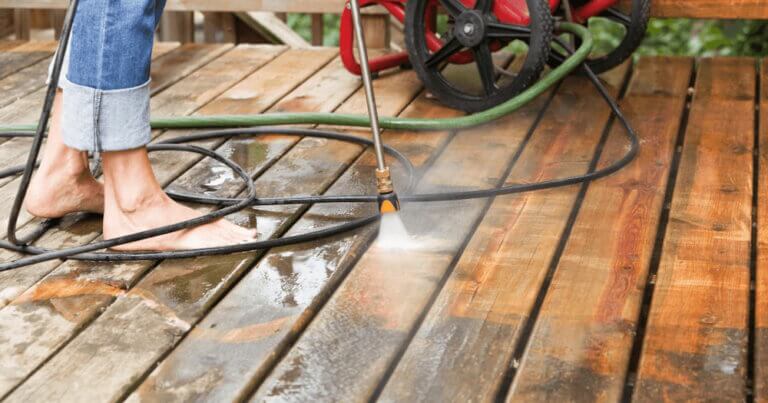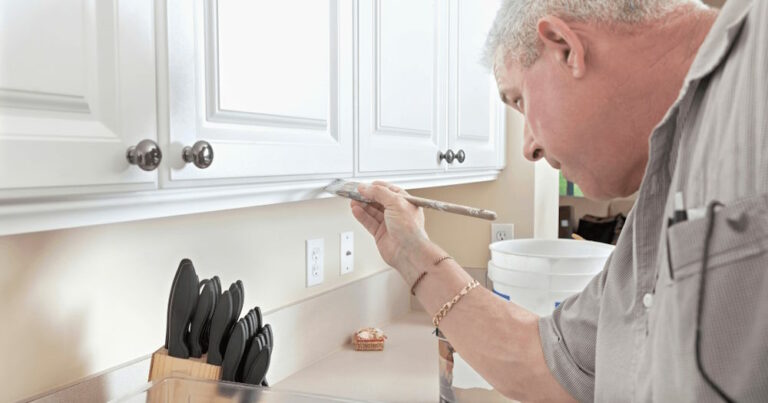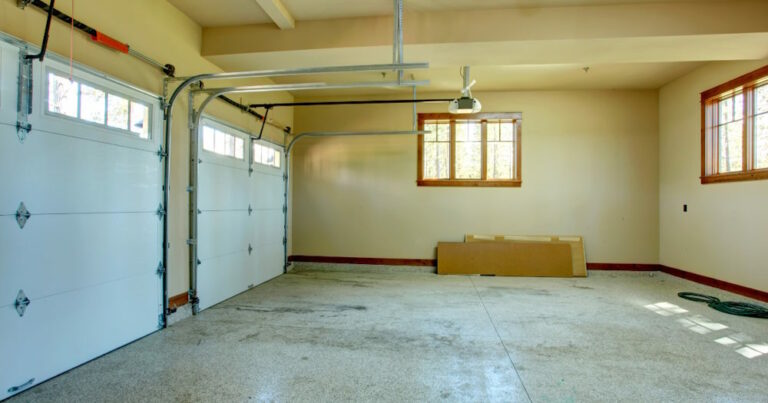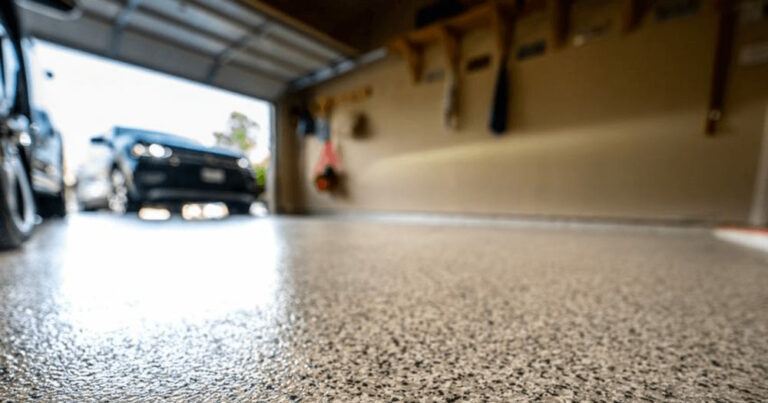Choosing the right exterior paint for stucco is crucial to ensure the longevity and curb appeal of your home. At Canyon Painting, we understand the unique painting needs of stucco exteriors and offer you the best solutions.
Stucco walls are made of a mixture of cement, sand, and water, which creates a porous and textured surface. That’s why stucco requires special paint that can adhere to the surface, bridge hairline cracks, and withstand harsh weather conditions. Our team of experts has compiled a list of the top picks and reviews for the best exterior paint for stucco, so you can make an informed decision.
When selecting the right type of paint for your stucco house, several factors need to be considered, such as the type of stucco surface, the climate in your area, and the desired finish. Whether you choose acrylic latex exterior paints, elastomeric paint, or masonry paints, we have the options that meet your needs.
Applying the paint correctly is just as important as choosing the right type. Our experts will guide you through the proper techniques for preparing and painting stucco surfaces, addressing any hairline cracks and ensuring a professional finish.
We don’t just stop at applying the paint – we believe in maintaining your stucco’s fresh paint job. With regular cleaning and protection from harsh weather conditions, your stucco exteriors will stay beautiful for years to come.
At Canyon Painting, we are committed to transforming your stucco exteriors with our professional painting services. Contact us today for a consultation and let us help you choose and apply the best exterior paint for your stucco.
Understanding Stucco Exteriors and Their Unique Painting Needs

Stucco exteriors have unique characteristics that differentiate them from other types of surfaces. Stucco walls are made of a mixture of cement, sand, and water, which creates a porous and textured surface. These key characteristics of stucco walls make them susceptible to cracking, moisture issues, and discoloration if not properly maintained.
Key Characteristics of Stucco Walls
The key characteristics of stucco walls, such as their porosity and texture, require special attention when it comes to painting. Stucco surfaces have a porous nature, meaning they have small spaces and openings that allow water vapor to pass through. Additionally, the texture of stucco walls can vary, ranging from fine to rough. These characteristics must be taken into consideration to ensure that the paint adheres properly and the desired finish is achieved.
Why Stucco Requires Special Paint
Due to the specific needs of stucco walls, special paint is required to provide the necessary protection and longevity. Stucco requires paint that is specifically formulated to adhere to its porous surface, bridge hairline cracks, and withstand the harsh weather conditions it may be exposed to. The unique formulation of special paint ensures that it can effectively fill and seal the small gaps in the stucco surface, preventing moisture infiltration and minimizing the risk of cracking and discoloration.
Selecting the Right Type of Paint for Your Stucco House
When it comes to painting your stucco house, choosing the right type of exterior stucco paint is crucial for a successful and long-lasting finish. Several factors need to be considered in the selection process, including the type of stucco surface, the climate in your area, and the desired finish.
Three popular options for stucco exteriors are acrylic latex exterior paints, elastomeric coatings, and masonry paints. Each type has its own benefits and limitations, so understanding their unique characteristics will help you make an informed decision.
Acrylic latex exterior paint is known for their durability and flexibility. They provide excellent coverage and adhesion to stucco surfaces, making them a popular choice for many homeowners. Elastomeric coatings, on the other hand, have a rubberized formula that offers superior protection against cracks and moisture infiltration. These coatings are ideal for stucco walls that are prone to cracking and require extra flexibility. Lastly, masonry paints are specifically designed for masonry surfaces like stucco exterior, providing enhanced protection and longevity.
In addition to considering the type of paint, it’s important to think about other factors such as UV resistance, water resistance, durability, and color retention. These factors will ensure that your paint job withstands the test of time, protecting your stucco house and maintaining its beauty.
Best Exterior Paint for Stucco: Top Picks and Reviews
Acrylic Latex Exterior Paints
To help you choose the best exterior paint for your stucco surfaces, we have carefully curated a selection of top-rated options. Acrylic latex exterior paints are a popular choice due to their durability and flexibility. These paints offer excellent adhesion to stucco surfaces, ensuring long-lasting protection against weathering and cracking. The acrylic formula allows the paint to expand and contract with the stucco, preventing any potential damage. Additionally, acrylic latex paints provide excellent color retention, allowing your stucco exteriors to maintain their vibrant appearance for years to come.
Elastomeric Coatings: A Durable Option
When it comes to superior protection, elastomeric coatings are an excellent choice for stucco surfaces. These coatings feature a special rubberized formula that provides exceptional durability and resistance to cracking and moisture infiltration. Elastomeric coatings create a flexible and elastic barrier on the stucco, allowing it to expand and contract without causing any damage to the paint or underlying surface. With their enhanced protective properties, these coatings not only prolong the lifespan of your stucco but also maintain its appearance in even the harshest weather conditions.
Masonry Paints for Enhanced Protection
Masonry paints are specifically formulated to provide enhanced protection to masonry surfaces, including stucco. These paints offer a high level of durability and longevity, making them ideal for withstanding the demands of exterior environments. With their advanced composition, masonry paints create a strong, waterproof barrier that protects stucco from moisture, UV rays, and other damaging elements. Additionally, masonry paints often feature self-priming properties, allowing for easy application and better adhesion to the stucco surface. When it comes to enhancing the protection of your stucco exteriors, masonry paints are a reliable and effective choice.
| Paint Product | Features |
| Brand A Acrylic Paint | Durable, flexible, excellent adhesion to stucco, color retention |
| Brand B Elastomeric Coating | Special rubberized formula, superior protection against cracks and moisture |
| Brand C Masonry Paint | Enhanced protection, waterproof barrier, self-priming properties |
Each type of paint—acrylic latex exterior paints, elastomeric coatings, and masonry paints—offers unique features and benefits for stucco exteriors. Consider your specific needs and preferences to determine which one is the best fit for your stucco surfaces. Whether you prioritize flexibility, durability, or enhanced protection, there is a paint option that will meet your requirements.
Application Tips: Preparing and Painting Stucco Surfaces
Properly preparing and painting stucco surfaces is crucial for achieving a smooth and professional finish. In this section, we will provide you with application tips that will help you achieve excellent results when working with stucco walls.
Surface Prep: Ensuring a Clean Base for Paint
Before painting stucco surfaces, it is essential to properly prepare the surface to ensure good adhesion and a long-lasting finish. Surface prep involves the following steps:
- Clean the stucco walls thoroughly using a mild detergent and water. Remove any dirt, dust, or debris that may hinder the adhesion of the paint. A soft brush or pressure washer can be used to clean the surface effectively.
- Inspect the stucco walls for any existing cracks or damage. Use a filler or caulk to repair hairline cracks and address any other significant cracks or areas of deterioration. Allow the filler or caulk to dry completely.
- Apply a primer specifically formulated for stucco surfaces. The primer helps seal the surface, enhances adhesion, and provides a smooth base for the paint. Follow the manufacturer’s instructions for proper application and drying times.
Techniques for Painting Exterior Stucco Walls
When painting exterior stucco walls, it is important to consider factors such as the texture of the stucco surface and the desired finish. Here are some techniques that can help you achieve excellent results:
- Use a high-quality paintbrush or roller designed for textured surfaces to ensure even coverage.
- Apply the paint in thin, even coats to avoid drips and excessive build-up. Backrolling can be beneficial to work the paint into the texture of the stucco.
- Pay attention to the direction of the stucco texture and follow it consistently during the painting process for a uniform finish.
- Consider using a paint sprayer for larger areas to achieve a faster and more efficient application. However, be cautious to protect surrounding areas from overspray.
Addressing Hairline Cracks Before Painting
Before applying paint to stucco walls, it is important to address any hairline cracks to prevent them from reappearing after painting. Here’s how you can handle hairline cracks:
- Carefully inspect the stucco walls for any hairline cracks. Use a putty knife or a similar tool to widen the crack slightly.
- Clean the crack and its surroundings to remove any loose debris or particles.
- Apply a specialized stucco patching compound into the crack, ensuring that it fills the entire crack evenly. Smooth out the patched area using the putty knife.
- Allow the patching compound to dry completely, following the manufacturer’s instructions.
- Once dried, sand the patched area lightly to create a smooth surface in preparation for painting.
By following these application tips, you can ensure a successful and long-lasting paint job on your stucco surfaces. The next section will focus on maintaining the fresh paint job on your stucco exteriors.
Maintaining Your Stucco’s Fresh Paint Job
Proper maintenance is key to preserving the fresh paint job on your stucco exteriors. Regular cleaning and maintenance of painted stucco, along with protecting your stucco from harsh weather conditions, are essential tasks to ensure the longevity and beauty of your stucco’s paint job.
Regular Cleaning and Maintenance of Painted Stucco
To maintain the appearance of your stucco’s paint job, regular cleaning is important. Use a mild detergent and a soft brush or pressure washer to remove dirt and debris that can accumulate on the surface. By cleaning your painted stucco regularly, you can prevent the buildup of grime and maintain its vibrant color and texture.
Protecting Your Stucco from Harsh Weather Conditions
Stucco exteriors can be exposed to harsh weather conditions, such as heavy rain, extreme heat, and freezing temperatures. To protect your stucco from these elements, it’s important to inspect for any signs of damage or deterioration. If you notice any cracks or areas of wear, take prompt action to address them. Apply a protective barrier or touch-up paint as needed to safeguard your stucco from further damage.
When to Apply a New Coat of Paint
Over time, the paint on your stucco may fade or become worn due to exposure to the elements. Knowing when to apply a new coat of paint is crucial for maintaining the aesthetics and protection of your stucco surfaces. Look for signs such as significant color fading, cracking, or chipping. If you notice any of these signs, it may be time to apply a fresh coat of paint to restore the beauty and longevity of your stucco’s paint job.
| Maintenance Task | Frequency |
| Cleaning painted stucco | Every 6-12 months |
| Inspecting for damage | Annually |
| Applying a new coat of paint | Every 5-10 years, or as needed |
Conclusion

Choosing the best exterior paint for stucco is essential for maintaining the longevity and curb appeal of your home. With a thorough understanding of the unique characteristics of stucco walls and their specific painting needs, along with careful selection of the right type of paint and proper application techniques, you can achieve a successful and long-lasting paint job. Regular maintenance and protection from harsh weather conditions play a vital role in preserving the fresh look of your stucco’s paint job.
When painting stucco, it is crucial to opt for high-quality paint products and follow expert guidelines. At Canyon Painting, we have the expertise and experience to help you achieve the best results for your stucco exteriors. Contact us today for a consultation and let us transform your home with our professional painting services. Our team is dedicated to delivering exceptional quality and customer satisfaction.
Don’t settle for less when it comes to your stucco’s paint job. Trust the experts at Canyon Painting to provide you with the best exterior paint solutions. Enhance the beauty and durability of your stucco surfaces with our reliable and professional painting services. We are committed to bringing your vision to life and ensuring that your stucco exteriors are protected for years to come. Get in touch with us today and let’s discuss your painting project!
FAQ
What is the best exterior paint for stucco?
The best exterior paint for stucco is one that is specially formulated to adhere to the porous surface, bridge hairline cracks, and withstand harsh weather conditions. Acrylic latex exterior paints, elastomeric coatings, and masonry paints are popular options for stucco exteriors.
What are the key characteristics of stucco walls?
Stucco walls are made of a mixture of cement, sand, and water, creating a porous and textured surface. These walls can be prone to cracking, moisture issues, and discoloration if not properly maintained.
Why does stucco require special paint?
Stucco requires special paint because of its porous surface and specific painting needs. The paint needs to adhere to the stucco surface, bridge hairline cracks, and withstand harsh weather conditions to ensure a long-lasting and durable finish.
How do I select the right type of paint for my stucco house?
When selecting paint for your stucco house, consider factors such as the type of stucco surface, climate, and desired finish. Acrylic latex exterior paints, elastomeric coatings, and masonry paints are popular options that offer different benefits and limitations.
What are the top picks and reviews for the best exterior paint for stucco?
The top picks for the best exterior paint for stucco include acrylic latex exterior paints, which are known for their durability and flexibility; elastomeric coatings with their special rubberized formula for superior protection against cracks and moisture; and masonry paints designed specifically for masonry surfaces like stucco.
What are some application tips for preparing and painting stucco surfaces?
Properly preparing and painting stucco surfaces involves cleaning the stucco walls, repairing any existing cracks or damage, and applying a primer. Techniques for painting exterior stucco walls may vary depending on the texture of the stucco surface and the desired finish.
How do I maintain the fresh paint job on my stucco?
To maintain the fresh paint job on your stucco, regularly clean the painted surfaces using a mild detergent and a soft brush or pressure washer. Additionally, protect your stucco from harsh weather conditions by inspecting for any signs of damage or deterioration and applying a protective barrier or touch-up paint as needed.
When should I apply a new coat of paint to my stucco?
Apply a new coat of paint to your stucco when the existing color starts to fade or when there are signs of damage. Regularly inspect your stucco surfaces and consider repainting every 5-10 years, or as needed, to maintain their aesthetics and protection.





